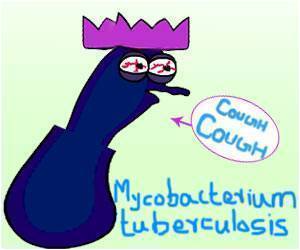Highlights
- It was thought that to reduce the virulence of a disease, introducing less pathogenic strains into a pathogenic population would be beneficial.
- But this practice of introducing milder microbes into a host could make the aggressive pathogen stronger and increase disease severity.
- This could also could hamper disease management.
But latest research has shown that could back-fire and make the disease worse and more damaging.
Strategy- May Not be a Silver Bullet
The University of Exeter scientists tested this strategy using a plant pathogen, and found the therapy could go wrong, with devastating consequences for the host plant.
The practice of introducing pacifist microbes into a host could make the aggressive pathogen stronger, which could hamper disease management.
They introduced a mixed population of an aggressive strain and a pacifist mutant strain of fungus into rice.
The reason for this could be that in some circumstances the milder pathogens "helped" aggressive microbes to be more efficient in utilizing resources obtained from the host.
Professor Ivana Gudelj, who led the research, said "Our study shows that a promising disease management strategy may not always be effective and indeed may have damaging unforeseen consequences. Importantly, our work also provides a foundation for the analysis of when, and why, this can happen. We find that the mechanisms driving our unexpected findings when treating rice blast infection are pertinent for many diseases involving bacterial and fungal pathogens"
Professor Nick Talbot, Professor of Molecular Genetics and expert in plant diseases, said "The strategy of introducing less aggressive microbes to fight more aggressive ones may prove effective to control some crop disease, but our study shows that they are not a silver bullet and caution needs to be exercised. “
“We need to understand how microbes interact with each other in natural settings, before we can try to alter their ability to cause disease in this way. Our study also shows why mathematicians and biologists need to work together more often, because we would not have understood this phenomenon at all without the mathematical analysis carried out." Nick added.
Need for Newer Strategies
The need for identifying new ways of treating infectious disease has increased with the emergence of resistance to antibiotics.
One strategy that is being explored to treat infections which resist current drugs involves neutralizing the disease-causing agent.
Neutralization involves extracting the agent from the patient so that the components of the microbe's DNA can be removed in order to neutralize the disease.
Then, the new harmless agent is grown in the lab and re-introduced to the disease site.
By this method, the researchers hope that the newly introduced agent will defeat its more harmful cousin by stealing resources the disease needs to proliferate. This has been proven effective in several lab tests.
The research published in eLife, highlights the need for these new strategies to be carefully tested before they are used therapeutically.
Reference
- Ivana Gudelj et al. Harbouring public good mutants within a pathogen population can increase both fitness and virulenc. eLife; (2016) doi.org/10.7554/eLife.18678
Source-Medindia










